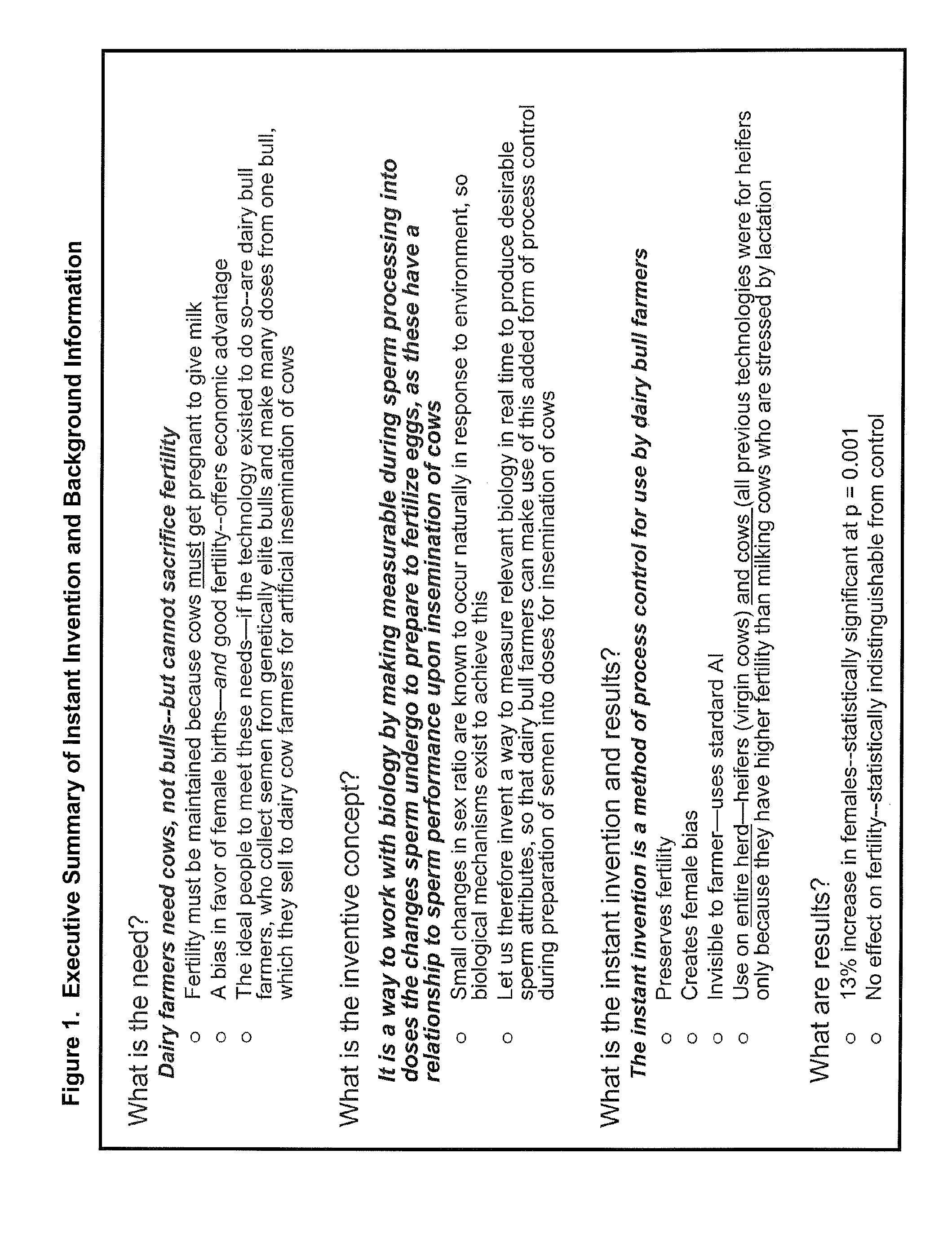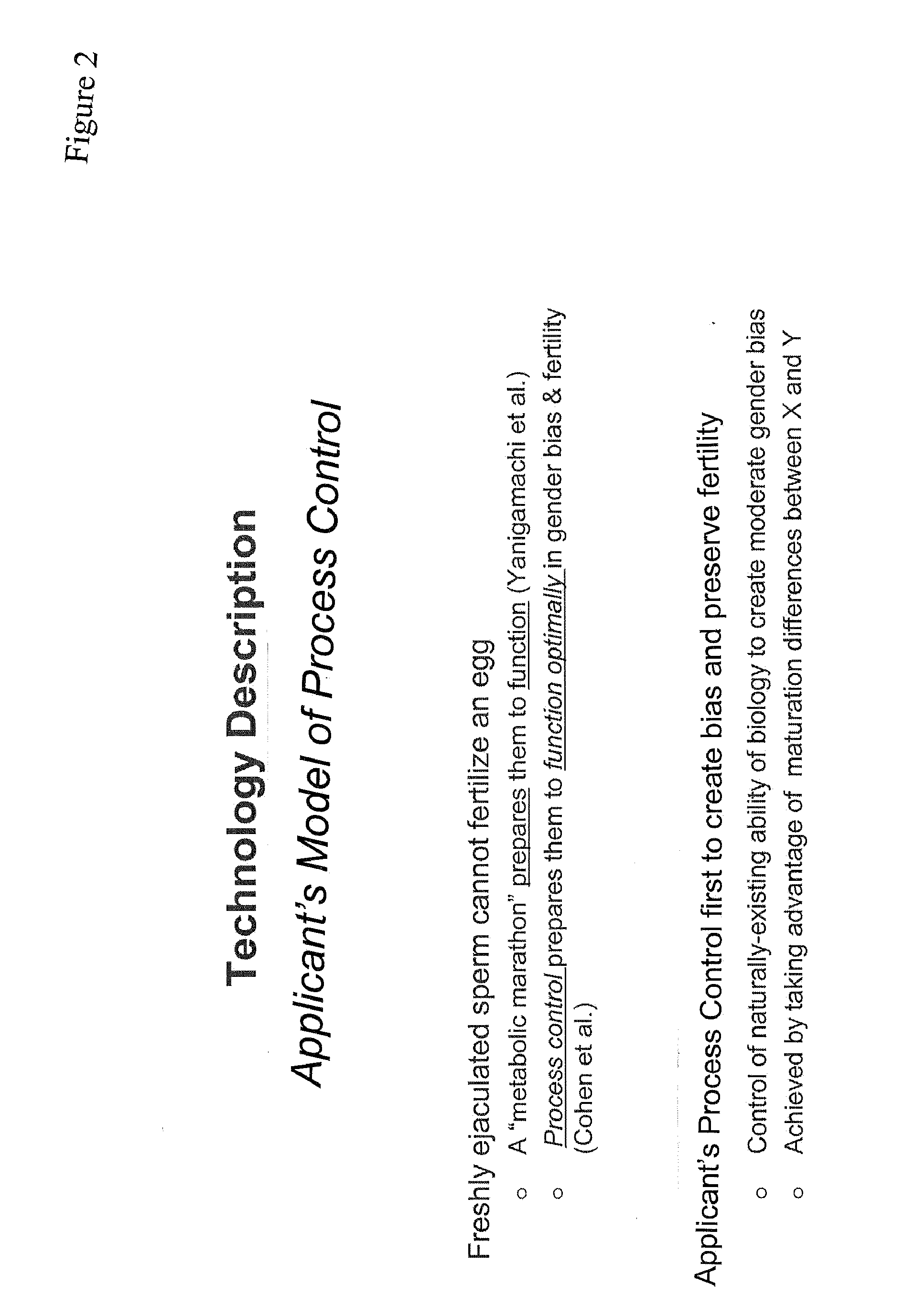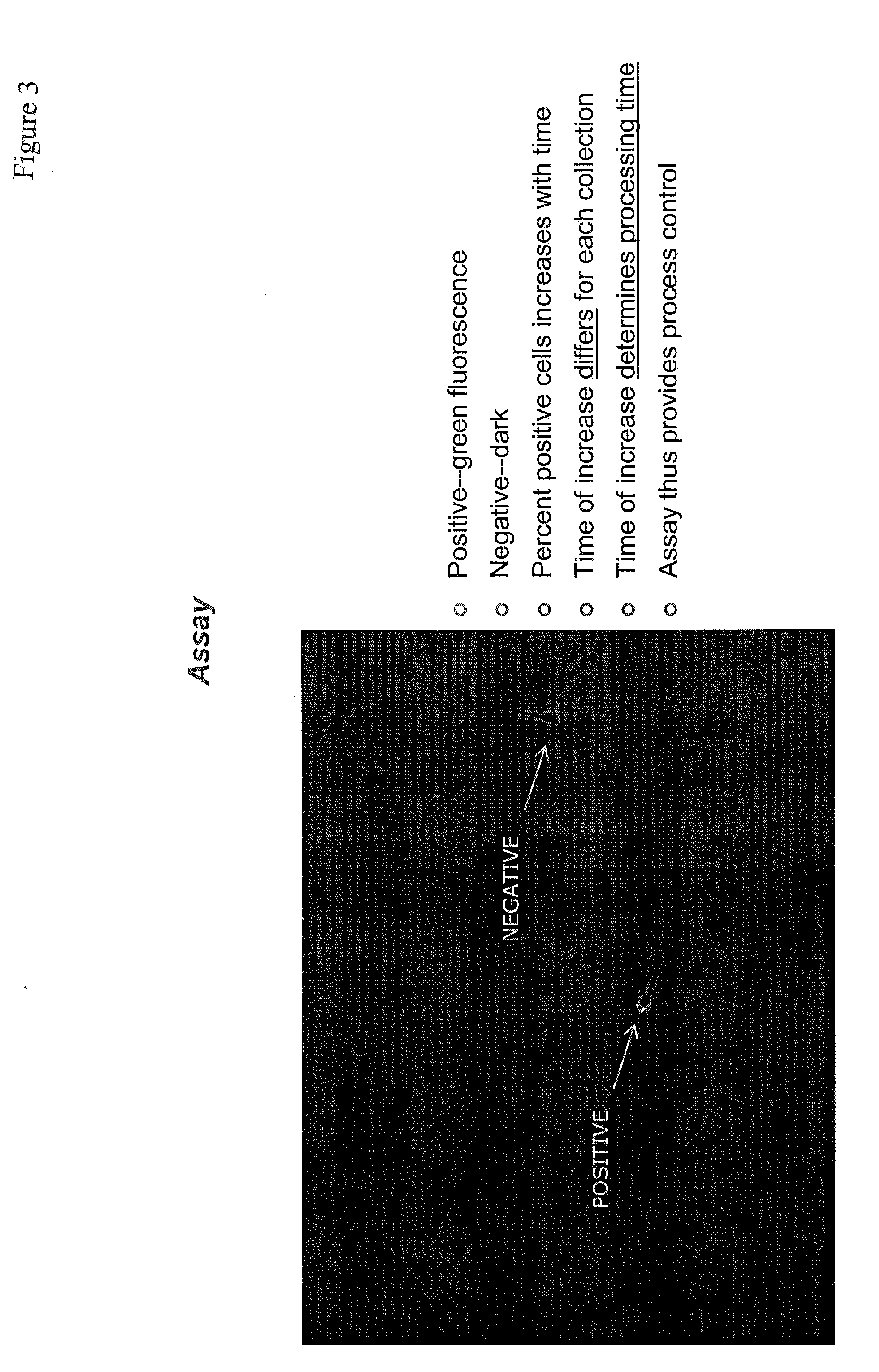Methods for Improving Fertility and Selectivity For Desired Offspring Sex in Artificial Insemination
- Summary
- Abstract
- Description
- Claims
- Application Information
AI Technical Summary
Benefits of technology
Problems solved by technology
Method used
Image
Examples
working examples
Example 1
Annexin Treatment
[0253]The sperm from a 10 μl sample of ejaculate is washed twice with PBS buffer (8 g NaCl; 0.2 g KCl; 1.44 g Na2HPO4•7H2O; 0.24 g KH2PO4; H2O to 1 liter. pH 7.2) and the cells resuspended at a concentration of ˜1×106 cells / ml in 1× Binding Buffer (10× Buffer is 0.1 M HEPES, pH 7.4; 1.4 M NaCl; 25 mM CaCl2).
[0254]100 μl of the solution (˜1×105 cells) is transferred to a 5 ml culture tube and 2 μl of Annexin V stock solution (Annexin V-PE; BD Biosciences cat. no. 556422, 556421) added. The cells are gently mixed and incubated for 5 min. at room temperature in the dark. 400 μl of 1× Binding Buffer is added and the cells analyzed immediately by fluorescence microscopy to determine the number of cells positive for apoptosis (i.e. Annexin V positive).
[0255]Controls are (1) unstained cells, (2) experimental cells stained with Annexin V-FITC for 5 min. and (3) blocked cells stained with 5 mg of unlabeled Annexin V and then Annexin V-FITC. Annexin A5 is used as a ...
example 2
Semen Preparation and Processing
[0260]A device according to PCT / US09 / 38134 was incubated at 32° C. for 60 minutes or more to ensure uniform heating of the device. Just prior to use, the device was removed and within 2 minutes of collection, the sperm was placed in the collection container, inverted once, then immediately placed at 12° C. for at least 15 minutes before sampling is begun. During the sampling time the collection of sperm is maintained at 12° C.
[0261]5 μl of undiluted semen is mixed in a 1.5 ml microfuge tube with 100 μl antibody diluent with Bovine Serum Albumin (Invitrogen SKU #00-3118). Twenty (20) μl of primary antibody (rabbit anti-Salmonella spp; Salmonella H antiserum A-Z product number 224061; Difco, Detroit, Mich.; reconstituted according to the manufacturer's instructions) is added, followed by 5 μl of secondary antibody conjugated to Alexa Fluor® 488 (goat anti-rabbit IgG (H+L); Invitrogen, Carlsbad, Calif., catalogue no. A11008) (2 mg / l) and mixed. The solut...
example 3
[0264]Semen was collected from dairy bulls (time=0) and incubated. At intervals, samples were taken and assayed according to Example 2. (A) assay of collections on two different days from a Canadian Holstein bull named Bacardi. (B) assay of collections on two different days from an Irish Friesian bull named RDU. Results are presented in FIG. 5.
[0265]Variability of sperm cell biology between bulls and between collections is revealed by the large differences in assay curve shape and in the time required for attainment of the assay peak point.
PUM
 Login to View More
Login to View More Abstract
Description
Claims
Application Information
 Login to View More
Login to View More - R&D
- Intellectual Property
- Life Sciences
- Materials
- Tech Scout
- Unparalleled Data Quality
- Higher Quality Content
- 60% Fewer Hallucinations
Browse by: Latest US Patents, China's latest patents, Technical Efficacy Thesaurus, Application Domain, Technology Topic, Popular Technical Reports.
© 2025 PatSnap. All rights reserved.Legal|Privacy policy|Modern Slavery Act Transparency Statement|Sitemap|About US| Contact US: help@patsnap.com



